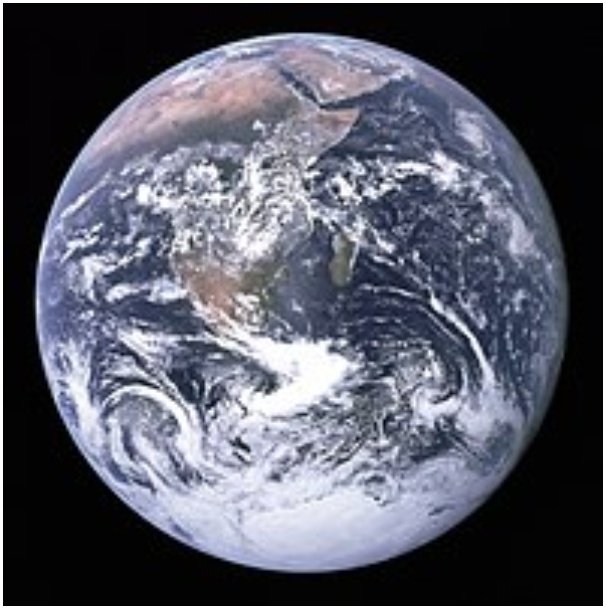Earth is the only planet to support life, and its natural features are the subject of many areas of scientific research. Within the solar system, it is about third of the sun; It is the largest terrestrial planet and the fifth largest in the world. Its most prominent climatic characteristics are its two large polar regions, two relatively narrow temperate regions and a broad equator for the sub-tropical region is tropical.

Rainfall varies widely every year with many meters less than one millimeter of water. 71 percent of the Earth's surface is covered with salt-water oceans. The rest comprises of continents and islands, with most living land in the northern hemisphere.
Earth has evolved through geological and biological processes, which left the mark of the original conditions. The outer surface is divided into several gradually micrating tectonic plates. The interior remains active, a thick layer of plastic metal and an iron core which generates magnetic fields. This iron core is made of a solid internal phase, and a fluid outer phase. Vascular motion in the core produces electrical currents through dynamo action, and in turn, the geological field is generated.
Atmospheric conditions have been significantly replaced by the presence of forms of life in the original conditions, which creates an ecological balance that stabilizes the position of the surface. Despite the wide regional differences in the climate by latitudes and other geographical factors, the long-term average global climate is quite stable during the interdependent period, and the degree or degree of average global temperature has historically had a major impact on ecological balance, and the earth's On real geography
Geology
Geology is the science and study of solid and fluid formation of the Earth. The fields of geology include the study of structures, physical properties, mobility, and the history of earth material, and the processes through which they are formed, moved and converted. This area is a major academic discipline, and it is also important for mineral and hydrocarbonectorization, knowledge and quenching about natural hazards, some geo-technical engineering areas, and past climate and environment to understand.
Geological development
Geography of an area develops over time because rock units are deposited and inserted and distortion procedures vary in their size and places.
Rock units are placed on the first surface or infiltrated in the overlapping rock. Coagulation can occur when the sediments get settled on the surface of the earth and later the lids are lithified in the sediment rock, or the surface is blanketed in the form of volcanic matter such as volcanic ash or lava flows. Intense infiltration, such as bathholith, lacolith, dykes and cils, push upwards in the upper reef, and crystallize while intruding.
After depositing the initial sequence of rocks, rock units can be distorted and / or converted. Deformation is usually the result of horizontal shortening, horizontal detail, or side-to-side (strike-slip) speed. These structural regimes are broadly related to convergence boundaries, different borders, and change boundaries between tectonic plates, respectively.
Coming soon next part.......
Telegram:-@shivams1804
Congratulations @shivams1804! You received a personal award!
You can view your badges on your Steem Board and compare to others on the Steem Ranking
Do not miss the last post from @steemitboard:
Vote for @Steemitboard as a witness to get one more award and increased upvotes!
Downvoting a post can decrease pending rewards and make it less visible. Common reasons:
Submit